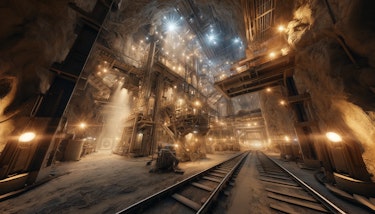The intersection of technology and real estate has revolutionized how properties are envisioned, designed, and managed. Among the most transformative innovations is the concept of digital twins — dynamic virtual replicas of physical assets enriched by real-time data. When combined with immersive technologies like virtual reality (VR) and augmented reality (AR), these tools offer unprecedented opportunities for property developers, managers, and end-users. They enhance every aspect of the real estate lifecycle, from design and planning to operations and customer experience.
This article delves into the essence of digital twins in real estate, their evolution alongside immersive technologies, and their transformative impact on visualization, management, and customer engagement. By exploring their practical applications and future potential, we uncover why this technology is indispensable for shaping the future of real estate.
Redefining Real Estate: What Are Digital Twins?
A digital twin in real estate is more than just a virtual model; it is a living, data-driven replica of a physical property. Unlike static blueprints or 3D models, digital twins evolve in real-time by integrating information from sensors, IoT devices, and other data streams. This enables stakeholders to simulate, monitor, and optimize buildings with unmatched precision.
For architects, digital twins offer an opportunity to experiment with designs in a virtual space before construction begins, predicting how structural elements will perform under different conditions. For property managers, they serve as a comprehensive tool for monitoring energy efficiency, maintenance needs, and tenant behaviors. And for buyers or tenants, digital twins create a fully immersive experience, allowing them to explore properties virtually before setting foot on-site.
These data-rich digital twins can be transformed into intuitive visuals, empowering stakeholders to make informed decisions while capturing the essence of the property’s design and functionality.

Credit: Resonai
The Evolution of Immersive Technology
The journey toward immersive digital twins has been driven by rapid advancements in visualization technologies. Virtual reality, augmented reality, and extended reality (XR) have unlocked new dimensions in how we interact with digital representations of the physical world. In the early stages, these technologies focused on enhancing user experience with static 3D models. However, as AI, machine learning, and IoT converged, digital twins emerged as dynamic tools capable of real-time updates and predictive capabilities.
Today, immersive technologies amplify the potential of digital twins. A prospective tenant can walk through a virtual apartment via VR, complete with accurate lighting, textures, and furniture layouts. An architect can collaborate with a client in real-time using AR overlays, visualizing design changes directly on a construction site. These developments are reshaping the design and communication processes in real estate, making them more interactive and efficient.

Credit: Digital Twin Insider
Enhanced Visualization and Planning
Digital twins have redefined architectural visualization, offering tools that make complex projects comprehensible and engaging. Gone are the days when clients relied solely on floor plans or static renderings. With digital twins, architects and developers can present dynamic, data-rich visuals that evolve with the project.
For example, developers can use a digital twin to showcase how a building will perform across seasons, highlighting natural light patterns, ventilation, and energy efficiency. Planners can simulate urban environments, testing how new constructions integrate into existing neighborhoods. These capabilities not only accelerate decision-making but also foster greater collaboration among stakeholders.
When presented effectively, these visualizations ensure clarity and purpose, helping stakeholders understand even the most intricate project details.

Credit: MDPI
Improved Property Management and Maintenance
For property managers, digital twins offer a paradigm shift in how buildings are operated and maintained. These tools provide real-time insights into energy consumption, occupancy rates, and mechanical systems, enabling proactive interventions and cost savings.
For instance, a digital twin can predict when an HVAC system might fail, allowing managers to schedule maintenance before disruptions occur. Similarly, insights from IoT sensors embedded in the building can optimize energy usage, reducing both operational costs and environmental impact.
By visualizing these operational benefits, digital twins align practical advantages with the larger narratives of sustainability and tenant satisfaction.

Credit: AZoBuild
Cost Savings and Risk Reduction
The economic benefits of digital twins are equally compelling. By enabling simulations and predictive analytics, these tools help stakeholders identify potential risks and inefficiencies long before they escalate.
For example, developers can simulate construction processes to detect logistical bottlenecks, avoiding costly delays. Similarly, predictive analytics can forecast the impact of design changes on budgets and timelines, ensuring that projects stay on track. These efficiencies translate into significant cost savings and a reduction in financial risk.
Communicating these benefits effectively turns complex datasets into actionable insights that resonate with diverse audiences.

Credit: Namirial Focus
The integration of immersive digital twins into real estate marks a transformative shift in how properties are designed, managed, and experienced. These tools bridge the gap between the physical and digital worlds, offering dynamic solutions that enhance visualization, streamline operations, and elevate customer engagement.
Digital twins represent not just a tool but a new way of thinking — one that embraces innovation, interactivity, and efficiency. By understanding and leveraging their potential, stakeholders can shape the future of real estate with confidence and creativity.
